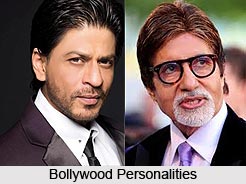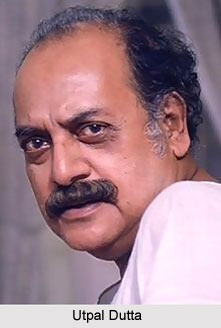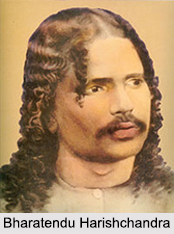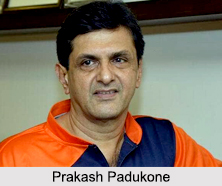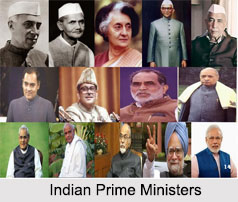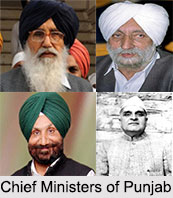 Since its formation as a separate state in independent India in 1947, Punjab has witnessed dynamic political transitions, shaping the trajectory of its governance. The position of the Chief Minister of Punjab holds significant importance, as the de facto executive authority rests with the chief minister despite the constitutional role of the Governor. As per the Constitution of India, the Governor of Punjab appoints the Chief Minister. The Chief Minister"s term is for five years and is subject to no term limits.
Since its formation as a separate state in independent India in 1947, Punjab has witnessed dynamic political transitions, shaping the trajectory of its governance. The position of the Chief Minister of Punjab holds significant importance, as the de facto executive authority rests with the chief minister despite the constitutional role of the Governor. As per the Constitution of India, the Governor of Punjab appoints the Chief Minister. The Chief Minister"s term is for five years and is subject to no term limits.
Governance of Punjab Province from 1937-1947
Before the partition of India, the province of Punjab, headquartered in Lahore, functioned under a bicameral legislature established by the Government of India Act 1935. Sir Sikandar Hayat Khan, of the Unionist Party, served as the Premier from 1937 until his demise in 1942, succeeded by Sir Khizar Tiwana. Post-1946 elections, Tiwana formed a government with the support of the Indian National Congress and Shiromani Akali Dal. However, he resigned in 1947 in protest against the decision of the Partition of India. During this period, the Punjab province was under Governor"s rule twice from 19th March 1945 to 21st March 1946 and from 2nd March 1947 to 15 August 1947.
Governance of Patiala and East Punjab States Union from 1948 to 1956
Post-partition, Patiala and East Punjab States Union (PEPSU) emerged, comprising the post-partition province of Punjab and eight princely states. Initially led by a Premier, the system transitioned to a chief minister in 1952. PEPSU was eventually merged into East Punjab (Punjab from 1950) on November 1, 1956, following the States Reorganisation Act, 1956. During this period Punjab was under President"s rule from 5th March 1953 to 8th March 1954. The then President of India was Rajendra Prasad.
Gian Singh Rarewala, an independent candidate was governing the state affairs from 1948 to 1951. He was succeeded by Raghbir Singh, a member of the Indian National Congress, who ruled the region from 1951 to 1952.
List of Chief Ministers of Patiala and East Punjab States Union
Here is a list of all the Chief ministers who ruled over the undivided region Patiala and East Punjab States from 1952-1956 after India became an independent nation.
| Chief Ministers |
Tenure |
Political Party |
| Raghbir Singh |
21st April 1952 (1 day) |
Indian National Congress |
| Gian Singh Rarewala |
1952 – 1953 |
Communist Party of India (Marxist) |
| Raghbir Singh |
1952 – 1953 |
Independent |
| Brish Bhan |
1955 – 1956 |
Indian National Congress |
Governance of East Punjab from 1947-1966
Formed in 1947 and renamed Punjab in 1950, East Punjab witnessed a series of chief ministers, including Gopi Chand Bhargava, Bhim Sen Sachar, Partap Singh Kairon, and others. During this period, the region went under President"s rule twice from 20th June 1951 to 17th April 1952 and also from 5th July 1966 to 1st November 1966. On November 1, 1966,
Haryana was partitioned from Punjab, leading to significant political changes.
List of Chief Ministers of Undivided Punjab
Here is a list of all the leaders who took control of the affairs of Punjab before Haryana was separated from it as a different state.
| Chief Ministers |
Tenure |
Political Party |
| Gopi Chand Bhargava |
1947- 1949 |
Indian National Congress |
| Bhim Sen Sachar |
1949 – 1949 (188 days) |
Indian National Congress |
| Gopi Chand Bhargava |
1949 – 1951 |
Indian National Congress |
| Bhim Sen Sachar |
1952 – 1956 |
Indian National Congress |
| Partap Singh Kairon |
1956 – 1964 |
Indian National Congress |
| Gopi Chand Bhargava |
1964 – 1964 (15 days) |
Indian National Congress |
| Ram Kishan |
1964 – 1966 |
Indian National Congress |
Governance of Punjab since 1966
Post-1966, Giani Gurmukh Singh Musafir became the first chief minister of the re-configured state. The political landscape witnessed alternating terms dominated by Congress and Akali Dal. Parkash Singh Badal served multiple terms, followed by Amarinder Singh and Charanjit Singh Channi, who made history as the first Dalit chief minister.
List of Chief Ministers of Punjab since 1966
Here is a list of all the leaders who served as Chief ministers of the state of Punjab after it was reorganized and Haryana received Statehood.
| Chief Ministers |
Tenure |
Political Party |
| Giani Gurmukh Singh Musafir |
1966 – 1967 |
Indian National Congress |
| Gurnam Singh |
1967 – 1967 (262 days) |
Akali Dal Sant Fateh Group |
| Lachhman Singh Gill |
1967 – 1968 |
Punjab Janata Party |
| Oommen Chandy |
2004 – 2006 |
Indian National Congress |
| Gurnam Singh |
1969 – 1970 |
Shiromani Akali Dal |
| Parkash Singh Badal |
1970 – 1971 |
Shiromani Akali Dal |
| Zail Singh |
1972 – 1977 |
Indian National Congress |
| Parkash Singh Badal |
1977 – 1980 |
Shiromani Akali Dal |
| Darbara Singh |
1980 – 1983 |
Indian National Congress |
| Surjit Singh Barnala |
1985- 1987 |
Shiromani Akali Dal |
| Beant Singh |
1992 -1995 |
Indian National Congress |
| Harcharan Singh Brar |
1995 – 1996 |
Indian National Congress |
| Rajinder Kaur Bhattal |
1996 – 1997 |
Indian National Congress |
| Parkash Singh Badal |
1997 – 2002 |
Shiromani Akali Dal |
| Amarinder Singh |
12002 – 2007 |
Indian National Congress |
| Parkash Singh Badal |
2007 – 2017 |
Shiromani Akali Dal |
| Amarinder Singh |
2017 – 2021 |
Indian National Congress |
| Charanjit Singh Channi |
2021 – 2022 |
Indian National Congress |
| Bhagwant Mann |
2022 – present (Incumbent) |
Aam Aadmi Party |
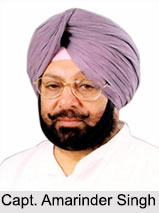 President"s rule in Reorganized Punjab
President"s rule in Reorganized Punjab
After the separation of Haryana as a distinct state from Punjab in 1966, the reorganized state experienced several periods of political instability marked by the imposition of President`s rule. The first instance occurred from 23 August 1968 to 17 February 1969, followed by subsequent interventions during 14 June 1971 to 17 March 1972, 30 April 1977 to 20 June 1977, 17 February 1980 to 6 June 1980, 6 October 1983 to 29 September 1985, and finally, from 11 June 1987 to 25 February 1992. These extended periods of direct governance by the President were characterized by the suspension of the state`s elected government, often in response to political and administrative challenges. President`s rule served as a mechanism to restore stability and governance in Punjab during times of heightened unrest and political uncertainty.
 Since its formation as a separate state in independent India in 1947, Punjab has witnessed dynamic political transitions, shaping the trajectory of its governance. The position of the Chief Minister of Punjab holds significant importance, as the de facto executive authority rests with the chief minister despite the constitutional role of the Governor. As per the Constitution of India, the Governor of Punjab appoints the Chief Minister. The Chief Minister"s term is for five years and is subject to no term limits.
Since its formation as a separate state in independent India in 1947, Punjab has witnessed dynamic political transitions, shaping the trajectory of its governance. The position of the Chief Minister of Punjab holds significant importance, as the de facto executive authority rests with the chief minister despite the constitutional role of the Governor. As per the Constitution of India, the Governor of Punjab appoints the Chief Minister. The Chief Minister"s term is for five years and is subject to no term limits.
 President"s rule in Reorganized Punjab
President"s rule in Reorganized Punjab
